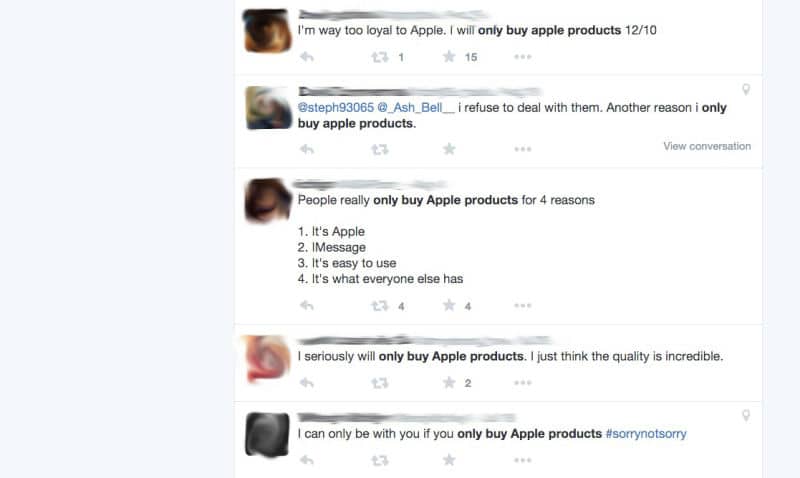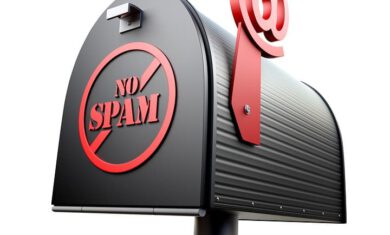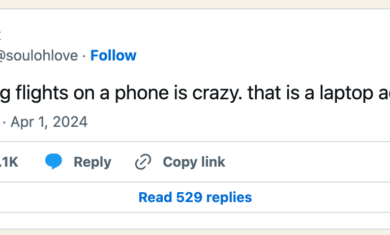Over the years I’ve worked hard to keep my digital life in a place where I can freely move from device to device without worrying about being too locked in to one system. Lifehacker wrote an article that summed it up perfectly: Brand loyalty is for suckers.
You tend to hear this most often with Apple. Here’s an image from the Lifehacker article:

There is certainly nothing wrong with using Apple products. They make excellent phones, and certainly the best (and most expensive) laptops on the planet. It’s when you get locked into their ecosystem to the point of not being able to leave that things get tricky.
Here are some examples:
Phones
When the iPhone first came out, I was enamoured. I wanted one. It took about a year, but I finally got one. The next year I waited in line for hours to get a new iPhone 3GS for myself and my wife.
However, Android came out before the first iPhone was even announced, and it seemed likely that it would be a better fit for me eventually. A few years later, it was. I switched. I had already moved my contacts over to Google, so the transition wasn’t too bad.
While I’m a huge fan of the new Google Pixel, it’s entirely possible that I’ll move back to iPhone one day. I think Android is better right now, but if I someday think Apple is better I’ll happily move back over.
Cell Networks
The same is true with cell networks. In 2016 I actually used three different providers.
I started the year at Verizon, who I still think have the best network. The pricing was just getting out of control, so I moved over to T-Mobile. I saved over 50% with that move, though the network is a bit lacking. Their network is quite impressive around Atlanta (even better than Verizon, I think), but it simply disappears outside of town. Driving to Florida last year, we had zero signal for about 1/3 of the trip.
After the Galaxy Note 7 fiasco, I switched over to Project Fi (explained here) and it’s worked very well.
Computers
Computers are another area where I like to keep my options open. I’m writing this from a Windows 10 desktop (which I love), but I can write from pretty much any web browser.
I’m really becoming drawn to some of the Google Chromebooks, as I can do about 95% of my work on them. As I mentioned above, I still completely believe that Macbooks are the best laptops you can buy. However, when looking at my Chromebook R13 post, the price is hard to ignore. That is a very nice Chromebook, and at $350 it’s roughly 1/10 the cost of a high-end Macbook. The Chromebooks we bought for our kids last year were $108 each and are still going strong.
Chromebooks wouldn’t work well for the designers on our team, as having access to the Adobe Creative Cloud software (Photoshop, InDesign, etc) is essential. For most of us, though, they can do anything you need.
My point again is to keep your options open. Drop me in front of a Windows computer, a Mac, or a Chromebook, and I’ll be able to do most of what I need to do.
Photos
Google Photos is an amazing product. You can store all of your photos in there for free, and it syncs automatically with your phone. It alone helps keep your options open (can work with iPhone, Android, Windows, Mac, Linux, whatever), but it also keeps its own options open with Google Takeout.
Google Takeout is one of the big reasons I tend to prefer Google products. You can argue about the amount of data that they collect, but they make it very easy to get all of that data back out. Microsoft is bad about that, and Apple is awful, but Google gives you one-click access to grab all of your info and move it elsewhere.
This is the power of Google Photos. It’s a phenomenal product that I’ll likely use for a long time, but if that changes I can grab all of my photos out of there in a single file and put them wherever I want.
Notes
I used Evernote for a long time and I was a huge fan of theirs, but have recently moved away from it. I’m now using Google Keep and it’s a great solution for me. As with Google Photos, though, all of my Google Keep notes can be quickly exported via Google Takeout, so I’ll only use it for as long as I think it’s the best.
I love Android. I like Windows. You might love Apple. All are great. Just keep your options open and don’t be a sucker.




Good thoughts, Mickey. I’ve been chewing on the same topic since Evernote disappointed me with some of their recent policy changes. Being tied to anything sucks when you really need to get out. It’s one of the reasons why my 40 year old self has been going more analog lately. Old fashioned paper is good to transport. Bullet Journaling seems to fit my life. Although admittedly… search speed is not as much fun.
I haven’t looked at keep yet. I just made a note to do so!
Evernote was so great for so long, but it just can’t keep up anymore. Simplenote is rather compelling too, though I’m sticking with Keep for now.
How did you move from Evernote to keep? Are there desktop options to scan directly into Keep? What about saving entire websites into it? Those are the main features I rely on Evernote for that I wasn’t aware Keep could mimick: being paperless by scanning into it, and saving entire articles so I still have them even if they’re taken offline. Plus I didn’t think Keep allowed anything like notebooks, stacks, and tags. Has it evolved?
Tevya — Good question! I actually moved most of my Evernote into Google Drive, with Keep simply for quick notes. I used Evernote for too much long-term storage; now that stuff is in Drive, and Keep works for short-term notes.
I didn’t use any tool to help move, and that was by choice. I moved manually, deleted a ton, reorganized, etc. It took quite a while (1500 notes, I think?), but was well worth it.
The only thing I scan are business cards, and I don’t save full websites anywhere. I’ll occasionally take a “scrolling screenshot” with SnagIt, or save useful articles into Pocket.
Keep has “labels”, which are similar to notebooks/tags, but not nearly as robust. I have most things sorted into editable docs in Google Drive, organized nicely in there.